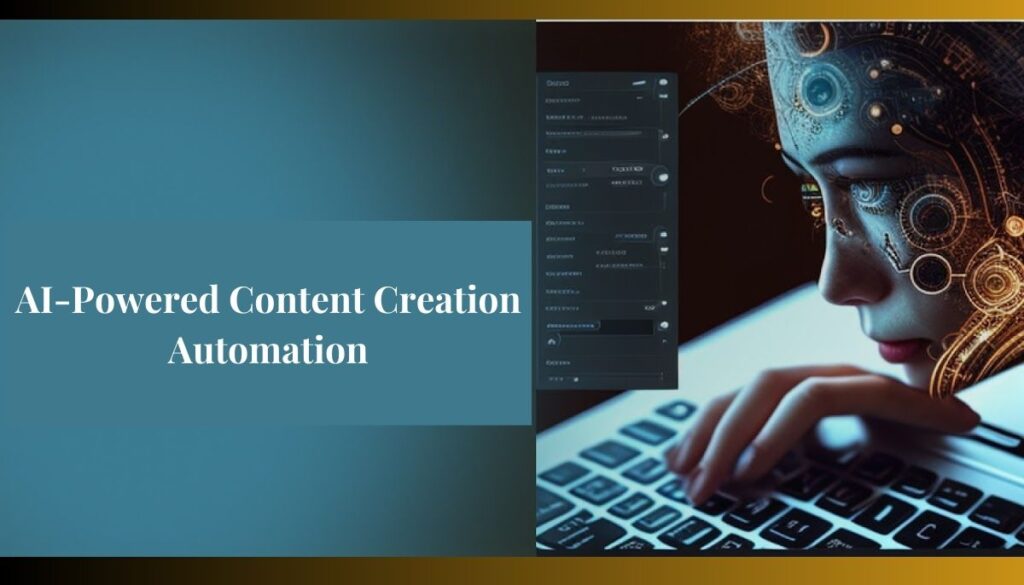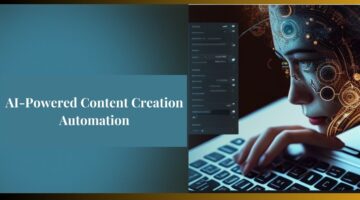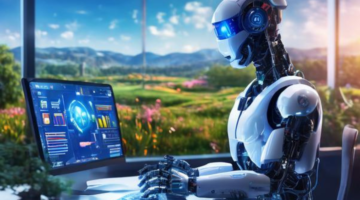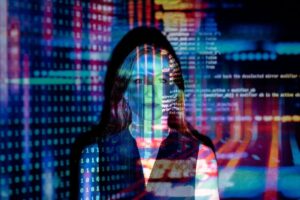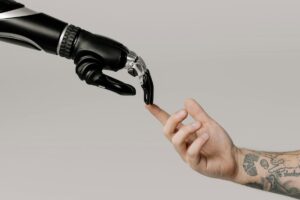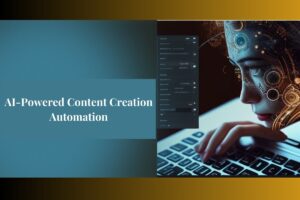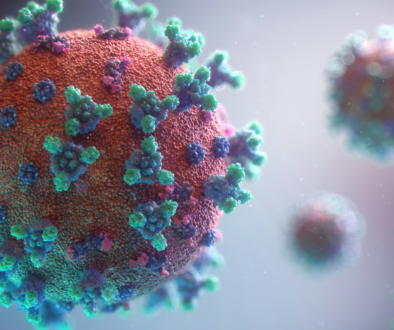How AI-Powered Generative Models Are Revolutionizing Content Creation
Understanding AI Generative Models
What Are AI Generative Models?
AI generative models are a subset of artificial intelligence designed to create new data that mimics a specific type of content. Unlike traditional AI models that might classify or predict outcomes, generative models focus on producing new, original content. These models use vast datasets to learn the patterns, structures, and nuances of the content they are trained on, enabling them to generate similar content autonomously.
Key Types of Generative Models:
- Generative Adversarial Networks (GANs): These involve two neural networks, the generator and the discriminator, working together to create realistic outputs.
- Variational Autoencoders (VAEs): VAEs are a type of neural network that can generate new data points by learning the distribution of the training data.
- Transformer Models: These models, like GPT (Generative Pre-trained Transformer), are particularly effective at generating text-based content.
The Rise of Content Creation Automation
Content Creation Automation: A New Era
Content creation automation refers to the use of AI technologies to produce content without human intervention. With AI generative models, automation has reached new heights, allowing for the rapid generation of articles, reports, graphics, videos, and more. This automation is not just about speed; it’s about consistency and scalability, providing businesses with the ability to produce high-quality content at scale.
Benefits of Content Creation Automation:
- Efficiency: AI can generate content much faster than humans, reducing production time and costs.
- Consistency: Automated content ensures uniformity in tone, style, and quality across all outputs.
- Scalability: AI allows for the mass production of content, catering to large-scale campaigns or diverse audience segments.
Industries Embracing Content Creation Automation:
- Marketing and Advertising: AI-generated ads, personalized marketing content, and social media posts are becoming increasingly common.
- Journalism: News agencies are using AI to draft reports, summaries, and even entire articles, freeing up journalists to focus on in-depth investigations.
- E-commerce: Product descriptions, customer reviews, and personalized recommendations are being generated by AI, enhancing the customer experience.

AI-Powered Creativity: Expanding the Horizons
While content creation automation highlights the efficiency of AI, AI-powered creativity delves into the artistic and innovative potentials of generative models. AI is not just a tool for repetitive tasks; it’s a collaborator that can inspire new ideas, styles, and forms of expression. From digital art to music composition, AI-Powered Creativity: Expanding the Horizons
While content creation automation highlights the efficiency of AI, AI-powered creativity delves into the artistic and innovative potentials of generative models. AI is not just a tool for repetitive tasks; it’s a collaborator that can inspire new ideas, styles, and forms of expression. From digital art to music composition, AI-powered creativity is expanding the boundaries of human imagination. is expanding the boundaries of human imagination.
AI-Powered Creativity: Beyond Automation
Examples of AI-Powered Creativity:
- Art: AI artists are generating paintings and digital art pieces that challenge traditional notions of creativity. AI-generated artworks have even been sold at prestigious auction houses.
- Music: AI is composing original music, blending genres, and even writing lyrics, offering new possibilities for musicians and composers.
- Writing: AI is co-authoring books, generating poetry, and creating narratives, showcasing its ability to understand and mimic complex literary styles.
The Human-AI Collaboration: AI-powered creativity doesn’t replace human creativity; it enhances it. Artists, writers, and creators are increasingly using AI as a tool to explore new ideas, experiment with different styles, and push the boundaries of their craft. This collaboration between humans and AI is leading to the creation of content that is both innovative and original, offering new forms of expression that were previously unimaginable.
Generative AI Technology: The Backbone of Innovation
How Generative AI Technology Works
Generative AI technology is built on complex algorithms that allow machines to learn from vast amounts of data. These algorithms are designed to understand the patterns and structures within the data, enabling them to generate new content that is both coherent and contextually relevant. The success of generative AI lies in its ability to mimic the intricacies of human-created content while introducing novel elements that are uniquely AI-driven.
Key Components of Generative AI Technology:
- Training Data: The quality and diversity of the training data significantly impact the performance of generative models. Large datasets with rich content allow AI to learn more effectively.
- Neural Networks: These are the core of AI generative models, enabling machines to simulate the way human brains process information and generate creative outputs.
- Reinforcement Learning: This technique involves training AI models by rewarding them for generating high-quality content, further refining their abilities over time.
Applications of Generative AI Technology:
- Content Personalization: Generative AI is being used to create personalized content for users, from tailored news feeds to customized product recommendations.
- Gaming: AI is generating complex game environments, characters, and storylines, creating immersive experiences for players.
-
Healthcare: Generative AI is assisting in medical research by generating synthetic data, developing new drug formulations, and even creating virtual patient simulations.
AI in Content Production: Transforming Industries
AI in Content Production: A Paradigm Shift
The integration of AI in content production is not just a trend; it’s a paradigm shift that is transforming how content is created, distributed, and consumed. From marketing to media, AI is playing a pivotal role in reshaping content strategies and operations across various industries.
Impact on Media and Entertainment:
- Film and Animation: AI is generating realistic CGI, creating virtual actors, and even writing scripts, pushing the boundaries of visual storytelling.
- Streaming Services: Personalized content recommendations powered by AI are enhancing viewer engagement, making it easier for users to discover new shows and movies.
- Publishing: AI is streamlining the editorial process by generating content, proofreading, and even suggesting edits, allowing publishers to produce content faster and more efficiently.
Impact on Marketing and Advertising:
- Targeted Advertising: AI is generating highly targeted ads based on user behavior and preferences, increasing the effectiveness of marketing campaigns.
- Content Generation: Brands are using AI to generate blog posts, social media content, and promotional materials, ensuring consistency and relevance across all platforms.
- Analytics: AI-driven analytics tools are providing insights into content performance, helping marketers optimize their strategies in real time.
Impact on Education:
- E-Learning: AI is creating personalized learning experiences by generating customized study materials, quizzes, and tutorials based on individual learning styles.
- Content Curation: AI is curating educational content from vast online resources, making it easier for educators to find relevant materials for their students.
- Virtual Classrooms: AI is powering virtual classrooms, enabling interactive and immersive learning experiences that go beyond traditional methods.
6. Challenges and Ethical Considerations
The Double-Edged Sword of AI Generative Models
While AI generative models offer immense potential, they also come with challenges and ethical considerations that must be addressed. As AI becomes more integrated into content creation, questions about authorship, originality, and the potential for misuse arise.
Key Challenges:
- Quality Control: Ensuring that AI-generated content meets quality standards can be challenging, particularly when dealing with creative outputs.
- Bias in AI: AI models can inadvertently learn and perpetuate biases present in their training data, leading to skewed or harmful content.
- Job Displacement: The automation of content creation raises concerns about the potential displacement of human workers in creative industries.
Ethical Considerations:
- Authorship and Attribution: As AI-generated content becomes more prevalent, determining who owns and should be credited for the work becomes increasingly complex.
- Misuse of AI: Generative AI can be used to create misleading or harmful content, such as deepfakes, which can have serious societal implications.
- Transparency: There is a growing need for transparency in the use of AI in content production, ensuring that audiences are aware when content is AI-generated.
7. The Future of AI-Powered Content Creation
What Lies Ahead?
The future of AI-powered content creation is both exciting and unpredictable. As generative AI technology continues to advance, we can expect to see even more sophisticated and diverse applications across various industries. The line between human and AI-generated content will blur further, leading to new forms of collaboration and innovation.
Predictions for the Future:
- Hyper-Personalization: AI will enable even more personalized content experiences, with content tailored to individual preferences and behaviors in real-time.
- Creative Collaboration: AI will become a co-creator, working alongside humans to produce content that combines the best of both worlds.
- Ethical AI Development: As the ethical challenges of AI become more apparent, there will be a greater focus on developing AI technologies that are fair, transparent, and responsible.
